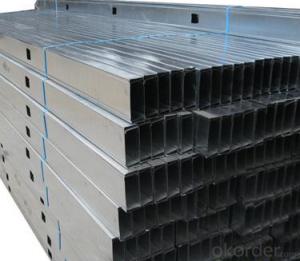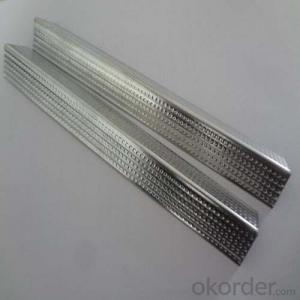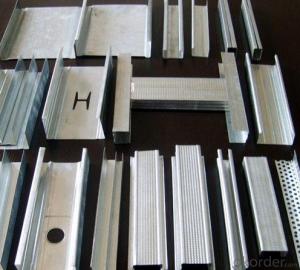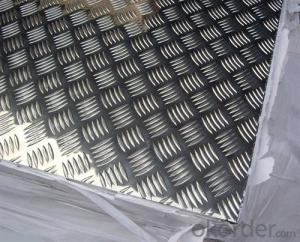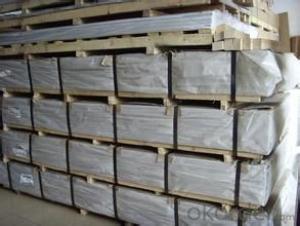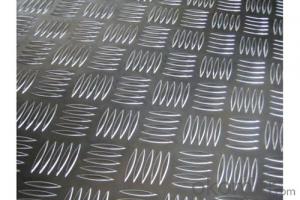Aluminum Tread Plate Sheet Metal
Aluminum Tread Plate Sheet Metal Related Searches
Primer For Galvanized Steel Msds Sheet For Magnesium Grinding Tools For Metal Metal Frames For Beds Metal Bar Chairs With Backs High Temperature Clear Plastic Sheet Galvanized Steel Wall Panels Galvanized Steel Sheet 4x8 Galvanized Steel Garden Beds 16 Gauge Sheet SteelHot Searches
Stock Price For Aluminum Aluminum Coil Stock For Sale Aluminum Gutter Coil For Sale Used Aluminum Scaffolding For Sale 1/4 Aluminum Plate For Sale Aluminum Bar Stock For Sale Aluminum Round Stock For Sale Aluminum Diamond Plate For Sale Aluminum Scaffolding For Sale Craigslist 6061 Aluminum Plate For Sale Aluminum Dock Plate For Sale 7075 Aluminum Plate For Sale Aluminum Tread Plate For Sale Aluminum Checker Plate For Sale Aluminum Plate For Sale Near Me Plate Aluminum For Sale Aluminum Plate For Sale Aluminum Square Stock For Sale Aluminum Flat Stock For Sale Billet Aluminum Stock For SaleAluminum Tread Plate Sheet Metal Supplier & Manufacturer from China
Okorder.com is a professional Aluminum Tread Plate Sheet Metal supplier & manufacturer, offers integrated one-stop services including real-time quoting and online cargo tracking. We are funded by CNBM Group, a Fortune 500 enterprise and the largest Aluminum Tread Plate Sheet Metal firm in China.Hot Products
FAQ
- Wonderland is the hard aluminum with what tools do? Thank you
- Wrought iron platform made 3 aluminum alloy with a hard aluminumAluminum + granite can also be synthesized
- Aluminum sheets can be shaped using various forming methods. These methods encompass: 1. Roll Forming: By passing the aluminum sheets through a series of rollers, they gradually take on the desired form. Roll forming is commonly employed to produce elongated shapes like channels or rails. 2. Press Forming: This technique involves utilizing hydraulic or mechanical presses to exert force on the aluminum sheet, resulting in the desired shape. Press forming is often favored for creating intricate shapes with precise tolerances. 3. Stretch Forming: The aluminum sheet is clamped at its edges and then stretched over a die, causing it to conform to the die's shape. Stretch forming is frequently utilized to manufacture curved or contoured parts. 4. Deep Drawing: This method entails inserting an aluminum sheet blank into a die and using a punch to force the material into the die cavity, creating a hollow shape. Deep drawing is commonly employed for producing cylindrical or box-shaped parts. 5. Hydroforming: Hydraulic pressure is employed to shape the aluminum sheet against a die. Hydroforming is particularly advantageous for crafting complex shapes with smooth surfaces. 6. Incremental Sheet Forming: This technique involves a CNC machine moving a small tool over the aluminum sheet's surface, gradually shaping it by applying localized pressure. Incremental sheet forming is often employed for prototyping or small-scale production. These forming methods offer distinct advantages and are suitable for different applications. The choice of method depends on factors such as the desired shape, complexity, and production volume.
- This aluminum is on a mobile home. I trying to repaint it and there is alot of areas were rust has ate the metal away. Especially in the seams. How can I get rid of the rust that already exists and stop it from coming back.
- Aluminum doesn`t rust. This is probably tin. If a magnet sticks to it, treat and paint as you would steel.
- Aluminum sheets have a wide range of applications due to their unique properties and versatility. Some common applications of aluminum sheets include: 1. Construction: Aluminum sheets are used in the construction industry for various purposes such as roofing, siding, gutters, and facades. They offer excellent durability, corrosion resistance, and the ability to withstand extreme weather conditions. 2. Transportation: Aluminum sheets are extensively used in the transportation industry, particularly in the manufacturing of automobiles, airplanes, trains, and ships. Their lightweight nature helps reduce fuel consumption and enhance vehicle performance while maintaining strength and durability. 3. Packaging: Aluminum sheets are widely used for packaging purposes, especially in the food and beverage industry. They are used for making cans, foils, and containers due to their ability to protect the contents from light, moisture, air, and bacteria. 4. Electronics: Aluminum sheets are used in the production of electronic devices, such as laptops, smartphones, and tablets. They are often used for heat dissipation due to their excellent thermal conductivity properties, ensuring the longevity and performance of electronic components. 5. Industrial applications: Aluminum sheets find applications in various industrial sectors, including aerospace, marine, chemical, and energy. They are used for manufacturing heat exchangers, tanks, pipes, and other equipment, thanks to their corrosion resistance and high strength-to-weight ratio. 6. Decorative purposes: Aluminum sheets are also utilized for decorative purposes in architecture and interior design. They can be easily shaped, colored, and textured to create attractive facades, wall panels, ceilings, and furniture. 7. Reflective surfaces: Aluminum sheets are commonly used for their reflective properties. They are used in mirrors, solar panels, light fixtures, and reflective signage to enhance brightness and improve energy efficiency. In summary, aluminum sheets are widely used in multiple industries due to their exceptional properties. Their lightweight, durability, corrosion resistance, and thermal conductivity make them a preferred choice for construction, transportation, packaging, electronics, industrial applications, decoration, and reflective surfaces.
- To prevent discoloration of aluminum sheets, it is important to apply a protective coating or finish to the surface. This can include using clear lacquer or anodizing the aluminum, which creates a durable oxide layer that resists corrosion and discoloration. Regular cleaning and maintenance, avoiding harsh chemicals, and protecting the aluminum from exposure to extreme temperatures can also help prevent discoloration.
- The thickness tolerance of aluminum sheet plays a significant role in determining its usability. The thickness tolerance refers to the acceptable deviation from the specified thickness of the sheet. It is typically expressed as a range or a plus/minus value. A tighter thickness tolerance ensures that the aluminum sheet meets the desired specifications consistently. This is crucial for applications where precise dimensions are required, such as in aerospace, automotive, and construction industries. In these applications, even a slight deviation in thickness can negatively impact the performance and functionality of the product. For instance, in aircraft manufacturing, the thickness tolerance of aluminum sheets used for structural components is highly critical. A thin sheet might compromise the structural integrity, while a thicker sheet could lead to excess weight, affecting fuel efficiency. Similarly, in the automotive industry, precise thickness tolerance is essential for ensuring compatibility and fitment of various components. On the other hand, a looser thickness tolerance can be acceptable for applications where precise dimensions are not as critical. For example, in general fabrication, signage, or decorative purposes, a wider thickness tolerance may not significantly affect the usability or appearance of the aluminum sheet. Additionally, the cost of manufacturing aluminum sheets with tighter thickness tolerances is typically higher due to increased precision and quality control measures. Therefore, the required level of tolerance should be balanced with the intended use and cost considerations. In conclusion, the thickness tolerance of aluminum sheet directly affects its usability, particularly in industries requiring precise dimensions. It is essential to select the appropriate tolerance level to ensure the sheet meets the required specifications, maintaining the desired performance and functionality of the final product.
- There are several methods of surface etching for aluminum sheets, including chemical etching, laser etching, and mechanical etching. Chemical etching involves applying an etchant solution to the surface of the aluminum sheet, which selectively removes material to create the desired pattern or design. Laser etching uses a high-energy laser beam to vaporize or ablate the surface of the aluminum, creating precise and detailed patterns. Mechanical etching involves using physical tools or abrasive materials to physically remove material from the surface, typically resulting in a more textured or roughened finish.
- Yesterday I picked up an 1988 performance bike. I bought it for the parts. It rode really good and now I'm deciding to keep it as is but I'm wondering if the bike is safe to ride. I've hear of aluminum horror stories and I'm assuming old aluminum isn't asnymore safe.Should I toss the frame and put the parts on a steel frame I have or ride it and not worry about it failing.
- Aluminum frames can last a really long time. But it depends more on how they were ridden and what kind of conditions they have seen than age. For example, I would never by a frame from a current bike racer even if it's only a year or two old. That frames seen a lot of stress and been put through a lot. Now a frame that my dad has had in the garage for the last 10 years hardly ridden, it's still practically new. That's a different story. I would recommend taking it to a local bike shop and having them look it over. This will actually achieve two things. 1. It'll let you know what kind of condition the frame is in. And 2. It'll help you build a relationship with your local shop and community. Keep in mind, that some shops aren't worth going to because they'll hassle you and tell you it's too old and you need new this and that. While some or all of that might be true, how they tell you will clue you into how they treat their customers. I've worked in the cycling industry for 10+ years and I can tell you that the condition of the frame is a case by case scenario. As such, you should have someone with some experience look it over.








